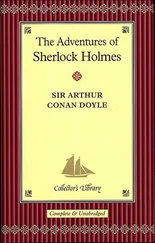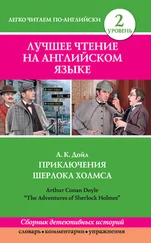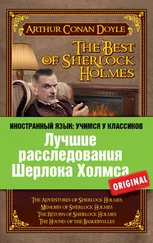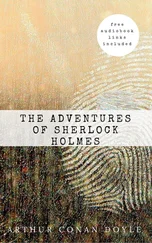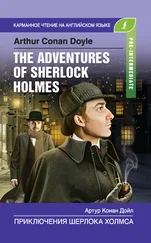Andronico grunted OK.
“Kenny, can you pass a polygraph?”
“I think I can.”
Bender’s anger flared. “You think you can? Jesus Christ, Kenny, if you pass the polygraph I’ll be happy to help you. If you don’t, and Bill tells me you’re a flat-out liar, I’ll hunt you down until the day I die.”
On Thursday, November 28, 1991, Thanksgiving evening, Richard Walter, home for a spell after trips to Hong Kong and Sydney on murder investigations, was dressing to go to a friend’s house for turkey and all the fixings. He was standing at the gilt Victorian hall mirror knotting his red tie on a white collar when the phone rang.
He stared at the bleating instrument thinking if it didn’t stop soon, one of them would have to go. Walter’s hypersensitive hearing was a gift on murder investigations, when he heard suspects whispering far out of normal earshot, and detected suprahuman signs of fear, such as sub-aural breathing increases, during interrogations. But the auditory assaults were getting worse with age. He couldn’t tolerate the sound of someone chewing food on the telephone line. When he detected the wet smacking of gum or the dry crunching of crackers on the other end, he hung up immediately.
His condition was apparently caused by sensory overload, the trademark of a man who absorbed too much information simultaneously. The aging ear sometimes lost the ability to screen noises, his doctor said.
He had been looking forward to crowning a successful year with a bottle of Chardonnay with friends. What execrable human being was delaying his celebration and jackhammering his ear-drums? He picked up the telephone.
“Who?” he exclaimed.
It sounded like a sales call. Walter prepared to hang up. He did not recognize the slippery, unctuous voice. Then he realized it was a stranger asking for a favor, and his ire rose along with his suspicion.
“Dr. who?”
“Frank told me if you want to solve this, and exonerate yourself, call Richard Walter,” the voice insisted. “He said, ‘He’s one of the best profilers in the world. He’ll give you good advice.’ ”
As the voice purred on, it came back to Walter: It was Dr. Kenneth Andronico, the ophthalmologist in Florida whose girlfriend, Zoia Assur, was missing in New Jersey. The police were getting nowhere; the doctor feared foul play and wanted help. Bender had told him to expect a call from “a good friend of one of my girlfriends.” Kenny was a confused and grieving man, Bender said, and needed some guidance.
Frank!
“Do you have a moment to give me some advice?” Andronico pleaded.
Walter scowled into the telephone. He instinctively didn’t like the oleaginous, manipulative voice. He checked his wristwatch: five minutes to seven. He would be late for Thanksgiving dinner.
“Oh, all right,” he said.
As Andronico told his story, from Zoia going missing to his suspicions of her policeman brother-in-law and general police ineptitude, Walter’s scowl deepened. The doctor didn’t sound like a confused and grieving boyfriend. He’d contacted a former FBI agent in Florida for help, and now Bender and Walter and the Vidocq Society. This isn’t making sense, Walter thought. He’s right in the midst of everything, and he’s coming up with all kinds of cockamamie theories.
After a few minutes, Walter cut him off sharply. He joined Bender in insisting that the doctor submit to a polygraph examination with Bill Fleisher, president of the Vidocq Society.
“Young man, you’re looking under all sorts of beds and stirring up a lot of dust. But the fact of the matter is you are the primary suspect because you’re not credible. I won’t be looking forward to the case unless you are checked out.” Walter hung up.
As he drove to Thanksgiving dinner, Walter couldn’t decide who was more confused, the doctor he now suspected of murder or his licentious partner Bender. Bender took the concept of knight-errantry, the wandering warrior, to a different dimension.
Some men are a heartbeat away from the presidency, he thought. Leave it to Frank to be a penis away from a murder.
CHAPTER 28. CATCH ME IF YOU CAN
The big, mustached ophthalmologist Dr. Kenneth Andronico sat in a small windowless room melting like a candle, which was better than his fiancée, Zoia Assur, who had been found in a shallow grave in the New Jersey Pine Barrens. But he wasn’t in great condition, either.
Dr. Andronico’s powerful face, wide in the jaw, wore a slick yellow sheen under the hot lights. He refused to make eye contact; his pupils darted along the rims of his eyes, as if looking to escape his head. But there was no escape. The big man was strapped into the subject’s chair with arm and finger cuffs. Rubber pneumograph tubes bound his chest and abdomen. He couldn’t see an exit. He couldn’t see much around the dominant, five-hundred-pound shadow formed by two very large men, renowned polygraph examiners Fleisher and Gordon. They leaned close with their cool voices and big, manicured hands.
Gordon tossed Andronico a softball question, a standard warm-up.
“How do you think you’ll do on the lie-detection test?”
“This thing, I think I can beat it,” Andronico said.
Gordon smiled to himself. Where do we find these guys? Let the fun begin.

The helicopters, dogs, and search squads had combed every inch of the Pine Barrens since August.
Four months later, the corpse was discovered in a place they’d already looked.
In December 1991, a hunter found Zoia Assur in a shallow grave in the piney woods, one of the largest remaining tracts of East Coast wilderness. Animals and the moist coastal sand had quickly reduced her to little more than a skeleton. Enough remained for the Ocean County medical examiner to determine the cause of death: Zoia had been shot three times in the chest. One of the bullets pierced her heart.
James Churchill, chief investigator for the Ocean County prosecutor’s office, said Assur was taking medicine for depression, and had killed herself near the spot where her sister had fallen to her death in a horse-riding accident seven years earlier. Fleisher and Gordon thought the police inquiry was “a joke.”
So they piled into a car with Joe O’Kane and Frank Bender, a team of four Philadelphia VSMs, and drove seventy-five miles east to the wooded area near Toms River, New Jersey, to see for themselves. Maybe an ex-Customs drug agent, FBI agent, black-belt polygraph examiner, and psychic artist could spot something the cops missed.
“It was unbelievable,” Bender said. Although the body had been removed and the scene cleaned up, they found fragments of Zoia’s clothes, even a piece of fingernail. Fleisher was more surprised by the mile they had to hike into the woods to find the place. And the style and location of the suicide weapon-a heavy, German-made Heckler amp; Koch P7, an eight-shot automatic found in a bag twenty-seven feet from the body.
“I get it,” he said sarcastically. “This petite young woman who is weak and sickly fights her way almost a mile through thick brush carrying a gun she’s incapable of firing. It takes twelve and a half pounds of pressure to fire the P7, and she’s not going to be able to turn it around herself and find the force to pull the trigger at that angle.” To test his theory, Fleisher asked Jan Bender, who was about the same size as Zoia, to try to shoot herself in the chest with the same gun, empty, at an indoor shooting range. Wearing a bulletproof vest, she awkwardly pointed the P7 automatic with both hands back at her chest, and pulled the trigger with all her strength for several minutes. She couldn’t do it. When she finally succeeded, the gun was pointing over her shoulder.
Читать дальше




